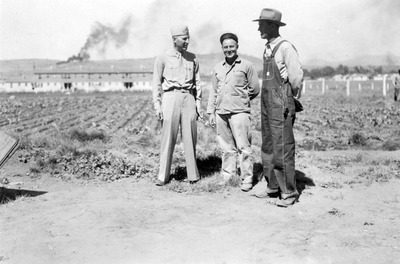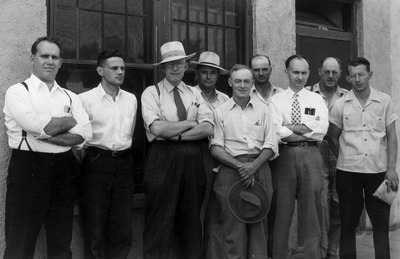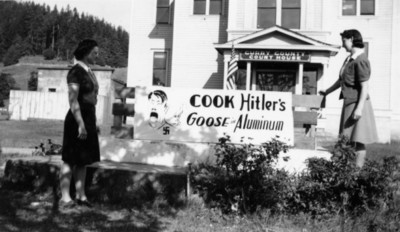Emergency Farm Fire Protection Service
In addition to ensuring the continued productivity of Oregon’s farmland, a number of other successful programs were run by the Oregon Extension during this time as well. One such program was the emergency farm fire protection service, which brought together more than 1,000 volunteer fire crews and helped to control 640 farm fires in Oregon. The state Extension soils specialist served as the leader for the emergency fire program and county agents helped to coordinate efforts on the local level.
Fires are an ever-present threat to farms; however, before WWII it was primarily the responsibility of the individual farmer and his neighbors to suppress farm fires. Food and fiber production were an essential component of the American war effort, and it was recognized that a fire could potentially destroy supplies of these necessary war materials at any time. Fears of Oregon’s agricultural resources being targeted by foreign attacks further heightened the need for an organized fire protection service. The fire protection program focused on prevention, teaching its local volunteers to combat burning fires, as well as how to spot potential fires on homesteads before they started in order to “Keep ‘em Standing.”
Neighborhood Leader Program
To help combat misinformation during the war, The Neighborhood Leader Program was instituted as a system to reach every rural family in Oregon with timely, factual information pertinent to the war. Starting in 1942, the program established personal contact networks in each county to disseminate news, information on victory bond and United War Fund Drives, and updates on food production and scrap drive goals. At the height of the program’s operation, a network of over 8,000 neighborhood leaders and 1,117 community leaders were working to keep Oregon’s rural populations up to date on the latest wartime developments.
Voluntary community and neighborhood leadership in Oregon, 1942
Salvage Drives
County extension offices were also instrumental in helping to coordinate salvage drives during the war. These drives collected a wide range of materials important to the war effort, including scrap metal, rubber, fats, paper, burlap bags, and nylon stockings. To save on fuel and tire wear, extension agents also coordinated county farm transportation committees to organize efficiency and cooperation amongst rural farmers.
Scrap metal harvest, 1942




